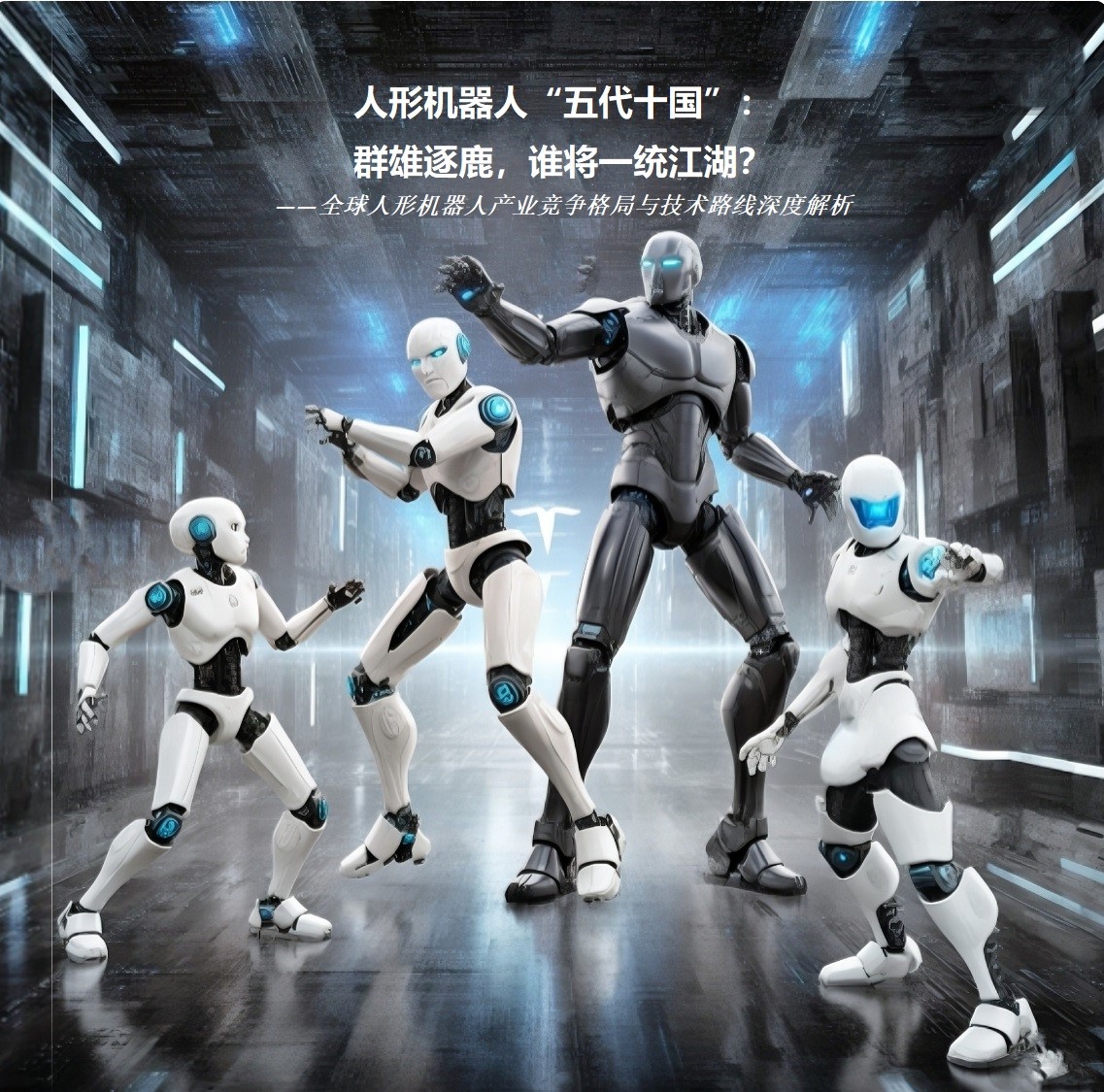—In-Depth Analysis of the Global Humanoid Robot Industry Landscape and Technological Pathways
When Boston Dynamics’ Atlas completed its first backflip, the entire robotics industry heard the call for a technological showdown. When Unitree Robotics’ G1 achieved a side flip at just one-tenth the price, the market saw the potential for disruptive change. And when Tesla’s Optimus began assembling parts in a factory with precision, the world realized that the dawn of humanoid robot commercialization had arrived.
This field, often referred to as the “Holy Grail of Robotics,” is witnessing a competition even more intense than the Warring States period. Traditional giants like Boston Dynamics are facing challenges from rising Eastern players such as Unitree, Fourier Intelligence, and Agibot Robotics, while tech titans like Tesla and Google enter the fray. In this race for industrial dominance, who will ultimately emerge as the leader?
I. The State of the Industry: A "Five Dynasties and Ten Kingdoms" Landscape
According to the latest industry map from the International Federation of Robotics (IFR), the humanoid robot sector has coalesced into three dominant factions:
1. Traditional Powerhouses: The Glory and Struggles of the Tech Kings
Boston Dynamics: The "Zhou Dynasty" of hydraulic-driven robots, holding the world record for joint torque at 840N·m with its Atlas model.
Honda ASIMO: The "Spring and Autumn Era Overlord" that first achieved bipedal walking, leaving a lasting legacy despite retirement.
Toyota: Leveraging its automotive industry expertise to develop the HSR series, focusing on elderly care applications.
2. Emerging Powers: The Pioneers of Cost-Performance Revolution
Unitree Robotics: The “Eastern Wu” of quadrupedal robots, boasting a 68% global market share, with its G1 humanoid robot priced at just ¥99,000 (~$13,700).
Tesla: The “Western Qin Dynasty” with a complete AI stack, aiming to slash the cost of Optimus to $15,000.
1X Technologies: The "Nordic Vikings," backed by OpenAI, with its EVE robots deployed in over 100 Walmart stores.

Figure: Humanoid Robotics Showdown: Who Will Dominate the Next Tech Frontier?
3. Disruptive Newcomers: The “Price Revolution” of Engine AI
The PM01 is priced at ¥88,000 (~$12,200), just one-tenth of the industry average.
Q1 2024 orders reached 1,200 units, 85% of which were for manufacturing applications.
The new PM02 model drops prices further to ¥66,000 (~$9,200), targeting industrial robotic arms.
4. Rising Challengers: Specialized Market Innovators
Agibot Robotics: Valued at over ¥7 billion (~$970 million), its Yuanzheng A1 focuses on industrial applications.
Figure AI: The “Shu Han Newcomer,” the world’s first humanoid robot unicorn, raising $675 million from investors including Jeff Bezos.
Galactic Robotics: The "Northern Yan Kingdom," securing a ¥1.2 billion (~$165 million) angel investment, dedicated to embodied intelligence research.
This fragmented landscape mirrors the ideological and technological divergence shaping the industry's evolution. Just as the intellectual ferment of the Warring States period propelled Chinese civilization forward, the current competition among humanoid robot technologies is reshaping the industry's trajectory.
II. The Battle of Technologies: Three Critical Arenas for Market Leadership
(1) The "Weapons Manual" of Drive Systems
Hydraulic Drives (Boston Dynamics): Like heavy cavalry—immensely powerful but costly and cumbersome.
Advantages: Unmatched torque (840N·m), superior dynamic performance.
Disadvantages: Energy consumption >5kW/h, high maintenance costs, unit price exceeding $1 million.
Electric Drives (Unitree/Tesla): Like light infantry—agile, cost-effective, and efficient.
Harmonic Drive (Unitree): Torque density of 120N·m/kg, lifespan exceeding 6,000 hours.
Direct Drive (Tesla): Eliminates reducers, potentially lowering costs by 40%.
Biomimetic Drives (Experimental Stage): Like future weapons—MIT’s artificial muscles achieve a power density of 300W/kg.
(2) The "Art of War" in Control Algorithms
Boston Dynamics: Adopts a "military-first policy," using MPC + WBC algorithms akin to Sun Tzu’s strategies, aiming for absolute control.
Unitree Robotics: Follows a “rural encirclement” approach, focusing on dynamic balance algorithms that resist 20kg impact forces without toppling.
Tesla: Champions "AI supremacy," leveraging Dojo supercomputers to train humanoid models that can understand vague instructions.
(3) The "Advisors’ Duel" in Perception Systems
Each faction is deploying unique approaches to environmental awareness and sensory processing, shaping their humanoid robots' decision-making capabilities.

figure:The technical layout of the perception system is divided into three major schools
III. The Battle for Resources: The Supply Chain and Commercialization Struggle
Ultimately, technological competition must translate into commercial viability. Unitree’s rapid ascent to a 70% global market share in just four years is not solely due to its technology but also to China’s supply chain advantages:
Motor costs: 40% lower than Western counterparts (e.g., Stepper Motors vs. Maxon Motors).
Reducer prices: Chinese harmonic drives cost one-third of their Harmonic Drive counterparts.
Engineering labor: R&D expenses are just one-fifth of Boston Dynamics’.
Meanwhile, Western firms face significant challenges: Boston Dynamics has burned through $2 billion over three decades without profitability, while Tesla seeks to leverage its automotive supply chain for cost reductions:
Repurposing automotive-grade chips: Cuts electronics costs by 30%.
AI infrastructure sharing: Dojo supercomputing accelerates robot model training.
Target cost: $20,000—just 1/50th of Boston Dynamics’ price tag.
IV. The Road to Unification: Three Key Battlefields in the Next Five Years
1. Industrial Penetration War
Automotive Assembly: Optimus achieves a 90-second per-task cycle time.
Electronics Manufacturing: Agibot achieves ±0.02mm precision in smartphone assembly.
2. Home Service Market Expansion
Elderly Care: Toyota’s HSR can perform 80% of basic caregiving tasks.
Children’s Education: Unitree’s educational robots are now in over 200 schools.
3. Specialized Applications Breakthroughs
Nuclear Plant Maintenance: Atlas performs 4-hour continuous operations at EDF facilities.
Space Exploration: NASA is testing humanoid robots for lunar base construction.
In this all-encompassing battle spanning technology, commerce, and ecosystem dominance, no entity holds permanent supremacy—only those who continuously innovate will thrive. Like the eventual unification of the Warring States, the humanoid robotics industry will inevitably consolidate. However, unlike the bloodshed of historical conquest, the victors in this technological "unification war" will be those who master core technologies while embracing open collaboration, balancing long-term innovation with immediate market viability.
When technological idealism and commercial pragmatism finally converge, the era of humanoid robots “uniting the world” will truly begin.






